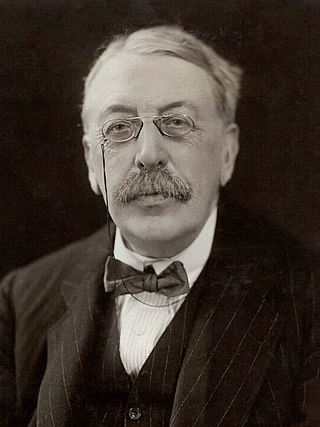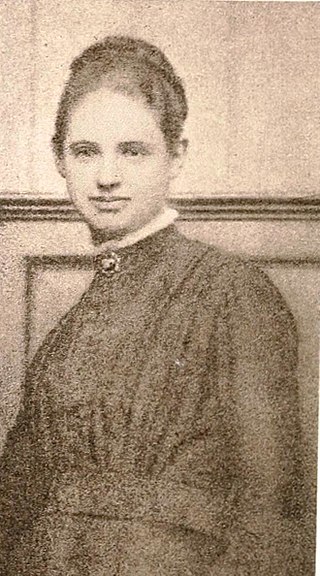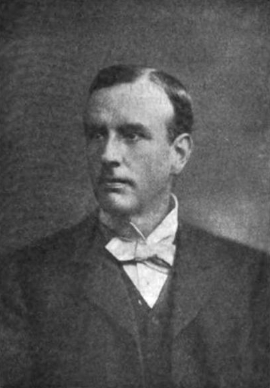
Sir Charles Hubert Hastings Parry, 1st Baronet, was an English composer, teacher and historian of music. Born in Richmond Hill, Bournemouth, Parry's first major works appeared in 1880. As a composer he is best known for the choral song "Jerusalem", his 1902 setting for the coronation anthem "I was glad", the choral and orchestral ode Blest Pair of Sirens, and the hymn tune "Repton", which sets the words "Dear Lord and Father of Mankind". His orchestral works include five symphonies and a set of Symphonic Variations. He also composed the music for Ode to Newfoundland, the Newfoundland and Labrador provincial anthem.

Sir Henry Walford Davies was an English composer, organist, and educator who held the title Master of the King's Music from 1934 until 1941. He served with the Royal Air Force during the First World War, during which he composed the Royal Air Force March Past, and was music adviser to the British Broadcasting Corporation, for whom he gave commended talks on music between 1924 and 1941.

Sir Charles Villiers Stanford was an Anglo-Irish composer, music teacher, and conductor of the late Romantic era. Born to a well-off and highly musical family in Dublin, Stanford was educated at the University of Cambridge before studying music in Leipzig and Berlin. He was instrumental in raising the status of the Cambridge University Musical Society, attracting international stars to perform with it.

Charles Wood was an Irish composer and teacher; his students included Ralph Vaughan Williams at Cambridge and Herbert Howells at the Royal College of Music. He is primarily remembered and performed as an Anglican church music composer, but he also wrote songs and chamber music, particularly for string quartet.

Samuel Coleridge-Taylor was a British composer and conductor. Of mixed-race descent, Coleridge-Taylor achieved such success that he was referred to by white musicians in New York City as the "African Mahler" when he had three tours of the United States in the early 1900s. He was particularly known for his three cantatas on the epic 1855 poem The Song of Hiawatha by American Henry Wadsworth Longfellow. Coleridge-Taylor premiered the first section in 1898, when he was 23. He married an Englishwoman, Jessie Walmisley, and both their children had musical careers. Their son, Hiawatha, adapted his father's music for a variety of performances. Their daughter, Avril Coleridge-Taylor, became a composer-conductor.

Mary Coleridge was a British novelist and poet who also wrote essays and reviews. She wrote poetry under the pseudonym Anodos. Other influences on her were Richard Watson Dixon and Christina Rossetti. Robert Bridges, the Poet Laureate, described her poems as 'wondrously beautiful… but mystical rather than enigmatical'.

An organ scholar is a young musician employed as a part-time assistant organist at a cathedral, church or institution where regular choral services are held. The idea of an organ scholarship is to provide the holder with playing, directing and administrative experience. It is an important part of music-making in Christian worship and is strongly associated with, but is not limited to, Anglican church music in the United Kingdom, Australia and the USA.

Alan Gray was an English organist and composer.
A part song, part-song or partsong is a form of choral music that consists of a song to a secular or non-liturgical sacred text, written or arranged for several vocal parts. Part songs are commonly sung by an SATB choir, but sometimes for an all-male or all-female ensemble. Part songs are intended to be sung a cappella, that is without accompaniment, unless an instrumental accompaniment is particularly specified.
Much Ado About Nothing is an opera in four acts by Charles Villiers Stanford, to a libretto by Julian Sturgis based on Shakespeare's play Much Ado About Nothing. It was the composer's seventh completed opera.
Roderick Gregory Coleman Williams OBE is a British baritone and composer.

Three Latin Motets, Op. 38, is a collection of three sacred motets based on Latin texts for mixed unaccompanied choir by Charles Villiers Stanford, comprising Justorum animae, Coelos ascendit hodie and Beati quorum via. The texts come from different sources, and the scoring is for four to eight parts. They were published by Boosey & Co in 1905. The works, some of Stanford's few settings of church music in Latin, have remained in the choral repertoire internationally and are performed in liturgies and concert.
Symphony No. 1 in B-flat major was the first symphony composed by Charles Villiers Stanford an Irish composer, music teacher, and conductor. It was written in 1876 to compete for a prize offered by the proprietors of the Alexandra Palace. It came second out of 46 entries earning a prize of £5. The symphony was dedicated to the tenor Arthur Duke Coleridge who had been a friend of Stanford's at Cambridge. It was first played at The Crystal Palace in London in 1879 but was never published or performed again in Stanford's lifetime.
This is a summary of 1917 in music in the United Kingdom.
This is a summary of 1906 in music in the United Kingdom.
Songs of Farewell is a set of six choral motets by the British composer Hubert Parry. The pieces were composed between 1916 and 1918 and were among his last compositions before his death.
This is a summary of 1901 in music in the United Kingdom.

The Violin Sonata No. 1 in D major, Op. 11, was composed by Charles Villiers Stanford in 1877, shortly after the composer completed his studies in Germany. It was one of his first pieces of chamber music, preceded only by his A major cello sonata. First performed the year it was composed, the sonata was published in 1878 by Ries & Erler in Germany, with a dedication to violinist Ludwig Straus.
This is a summary of 1900 in music in the United Kingdom.










